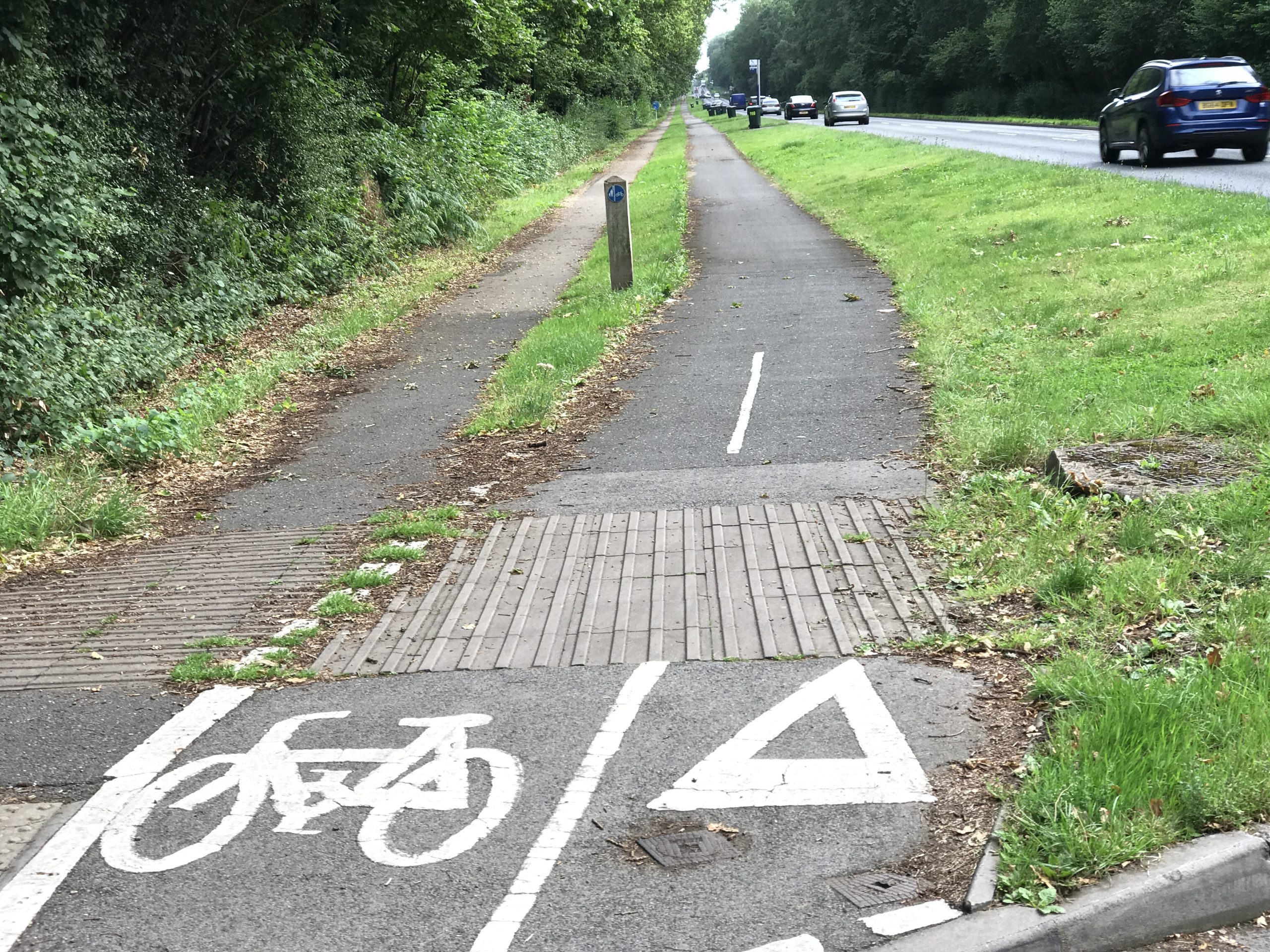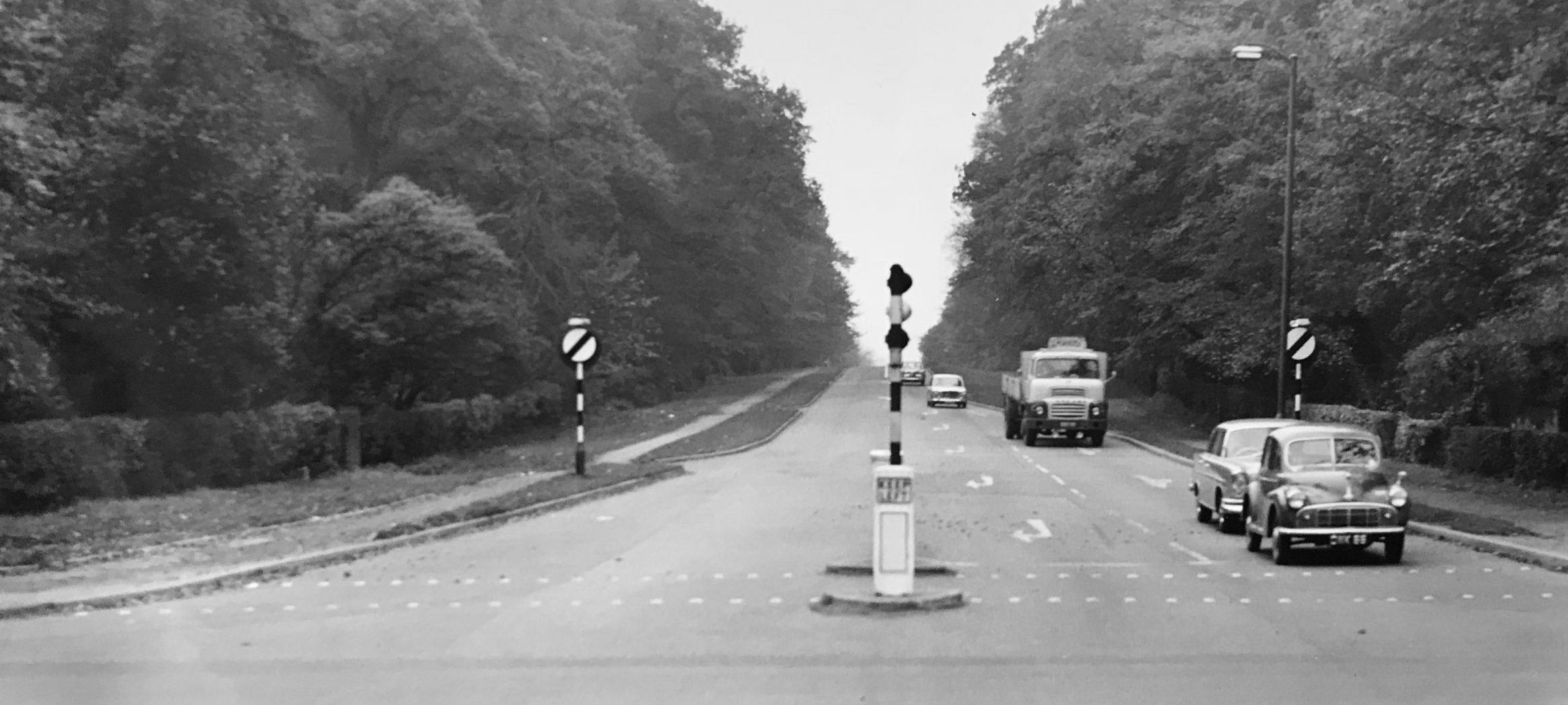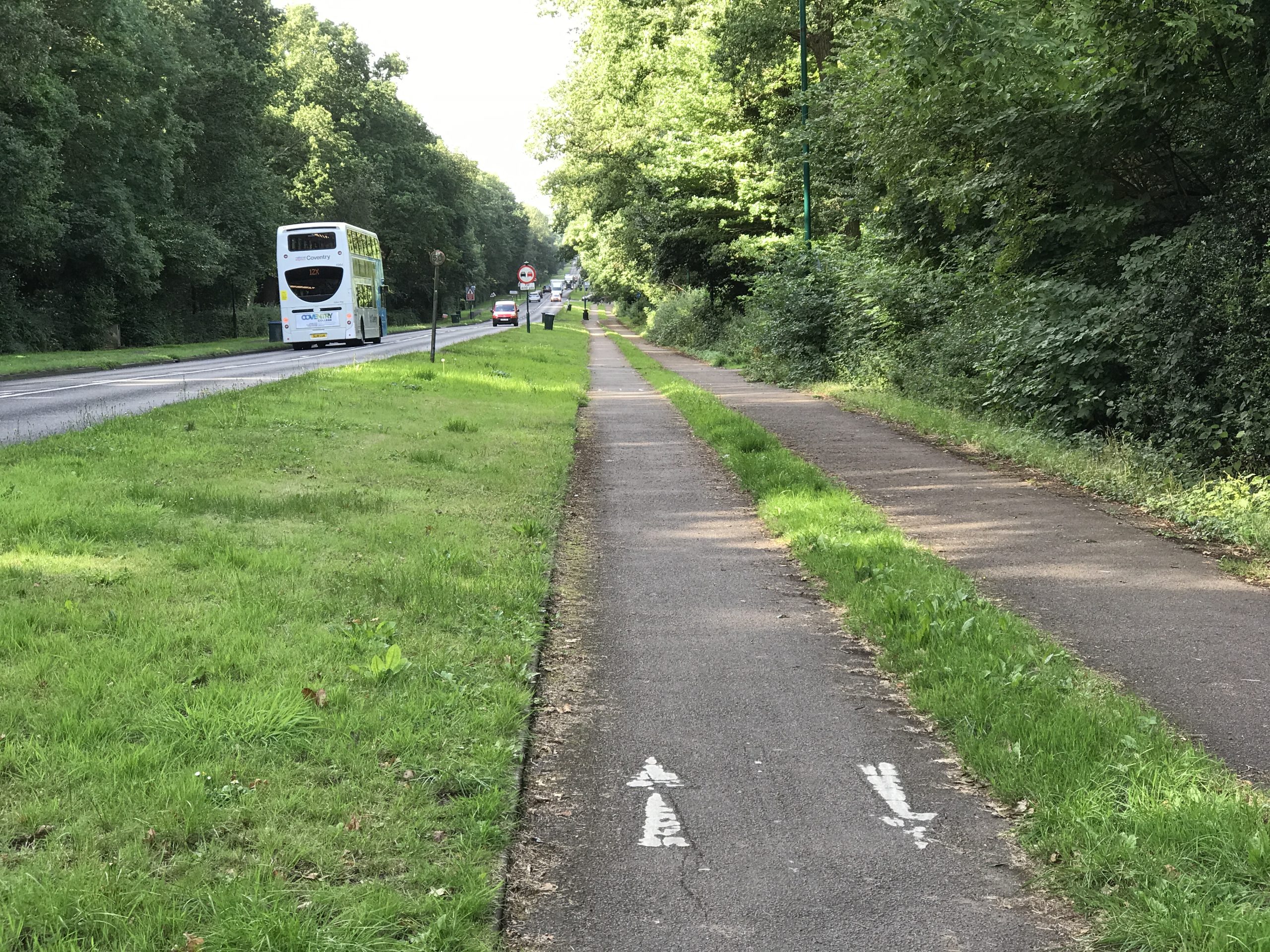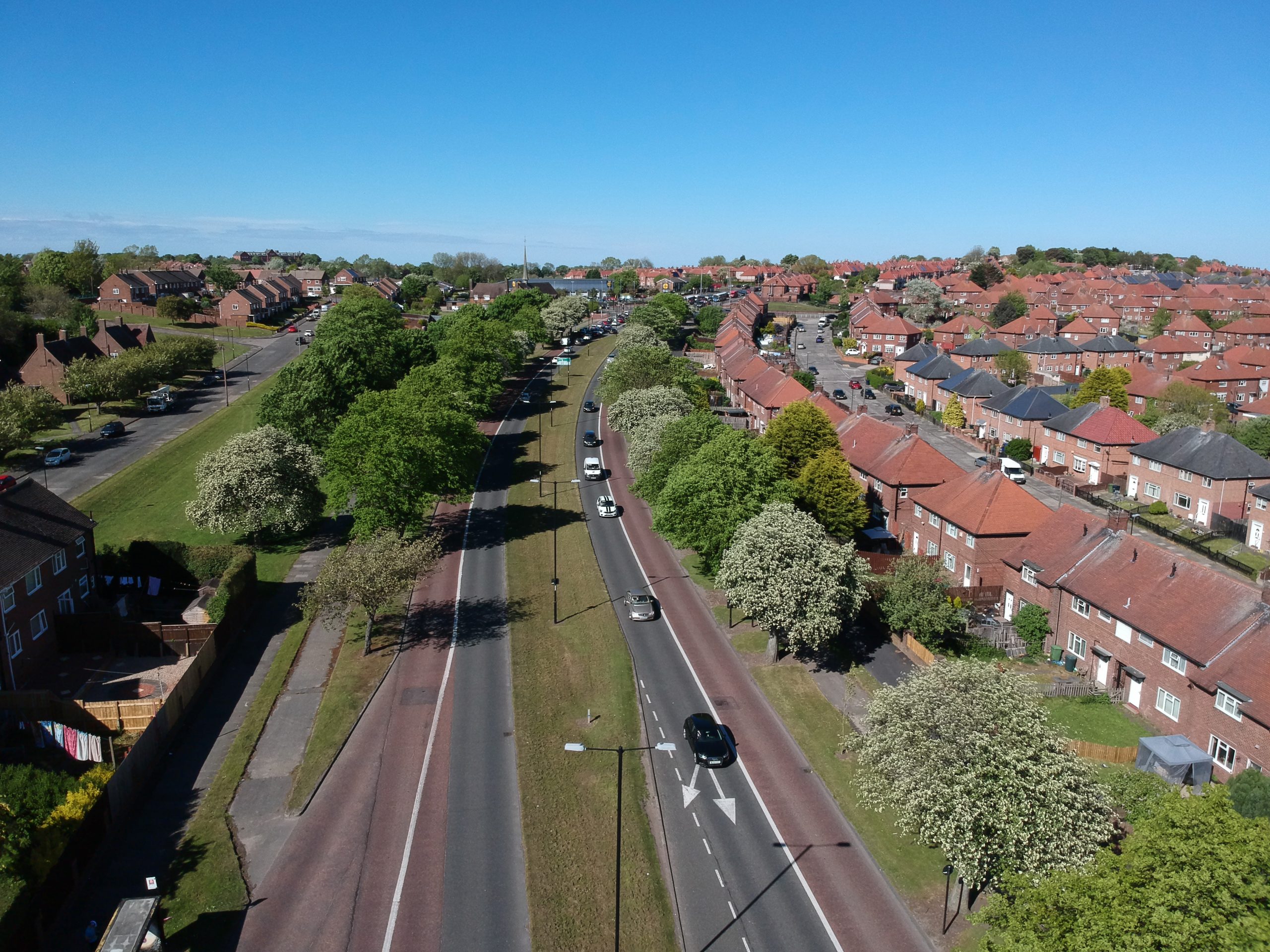
Kenilworth Road’s cycle track and adjacent footway.
The Kenilworth Road cycle tracks — which would have run on both sides of the road — were constructed between 1938 and 1939 and connect to the Kenpas Highway and thence to the rest of the Coventry bypass. (The road was the A46 at the time; it is now the A429.)
There had previously been stiff opposition to the Kenilworth Road tracks from locals as well as cycling organisations.
The first plans for cycle tracks on the road were lodged with the Ministry of Transport in 1934. The Ministry was in favour of the tracks.
“Coventry City Council decided this morning to defer the question of constructing a cyclists’ track along the grass verge of Kenilworth Road from the Grove to Gibbet Hill,” stated a 1934 newspaper report.
“This proposal, sponsored by the Ministry of Transport and estimated to cost £4,400, would have involved a nett expenditure by the Corporation of £1,760, the remainder being met by the Ministry of Transport,” continued the newspaper report.

Kenilworth Road looking south from Kenpas Highway, 1963. Unlike today there were then cycle tracks on both sides of the road. Credit: Coventry Archives.
“The main question in the minds of members was their determination to safeguard the amenities of Kenilworth Road from anything which savoured of spoliation.”
Alderman Wyley said the Kenilworth Road was “one of the most beautiful spots in England, and anything that would detract from the beauty of that road would be deplored, not only by the citizens of Coventry, but by many people outside.”
He feared that the proposed 9ft-wide cycle track would “become little more than a cyclists’ racing track.”
The council voted against the proposal, but reintroduced the scheme two years later. Again, it was voted down.
“The [Coventry] Corporation have set a good example in their care for the beautiful Kenilworth Road,” reported the Coventry Herald in 1936, “and have resisted the proposal to detract from its amenities by constructing cycle tracks along it.”
Opposition to the tracks was overturned two years later when “Kenilworth Urban District Council … made a declaration in favour of tracks for the exclusive use of cyclists,” said the Leamington Spa Courier in 1938.

Kenilworth Road still has a verge-separated cycle track and footway but, today, on one side of the road only.






